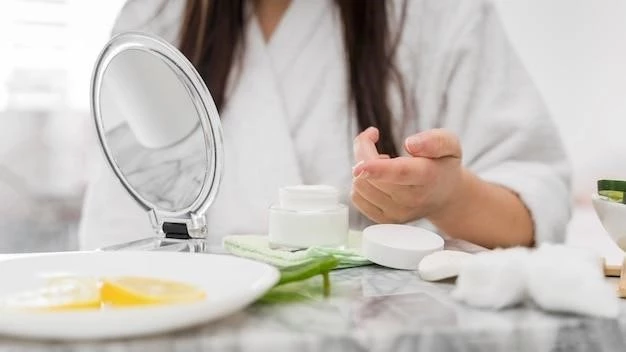Ultravate X Cream⁚ Relief for Inflammatory Skin Manifestations
Uses of Ultravate Cream and Ointment
Ultravate Cream and Ointment are topical corticosteroids used to treat various skin conditions such as eczema, psoriasis, dermatitis, and allergic reactions. They work by reducing inflammation, itching, and redness in the affected area.
These medications should be applied thinly to the affected skin once or twice daily, as directed by a healthcare provider. It is essential to wash your hands before and after applying Ultravate, and avoid getting it near your eyes, nose, or mouth.
Ultravate Cream and Ointment are not intended for use on the face, underarms, or groin area unless instructed by a doctor. It is important to follow the prescribed dosage and duration of treatment to avoid potential side effects.
If you experience any adverse reactions or do not see improvement in your skin condition after using Ultravate, consult your healthcare provider for further guidance. Do not use this medication on broken or infected skin without medical approval.

Side Effects of Ultravate Medication
While Ultravate Cream and Ointment are effective in treating various skin conditions, they may cause side effects in some individuals; Common side effects include burning, itching, redness, or irritation at the application site;
In rare cases, more severe side effects like skin thinning, stretch marks, or changes in skin color may occur with prolonged use of Ultravate. It is important to monitor your skin closely and report any concerning symptoms to your healthcare provider;
If you experience allergic reactions such as rash, itching, dizziness, or trouble breathing while using Ultravate, seek immediate medical attention. Long-term use of corticosteroids like Ultravate may also lead to systemic side effects, so it’s vital to use them under medical supervision.
To minimize the risk of side effects, follow your healthcare provider’s instructions regarding the use of Ultravate and discuss any concerns or unusual symptoms with them promptly. Do not exceed the recommended dosage or duration of treatment without medical approval.
Alternatives to Ultravate Cream
When Ultravate Cream is not suitable or if you are looking for alternative treatment options, there are several alternatives available for managing skin conditions. Some alternatives to Ultravate include⁚
- Topical Steroids⁚ Other topical corticosteroids like hydrocortisone, triamcinolone, or clobetasol can be considered based on the severity of your skin condition.
- Non-Steroidal Creams⁚ For milder cases, non-steroidal creams containing ingredients like emollients, antihistamines, or calcineurin inhibitors may be recommended.
- Moisturizers⁚ Regular use of moisturizers can help hydrate the skin and reduce symptoms of dryness and itching.
It is important to consult with a healthcare provider or dermatologist to determine the most suitable alternative to Ultravate based on your skin condition, medical history, and treatment goals. They can provide personalized recommendations and guidance on the use of alternative medications or therapies.
Ultravate⁚ Treatment for Skin Conditions
Ultravate, containing the active ingredient halobetasol, is commonly prescribed to treat various skin conditions characterized by inflammation, itching, and redness. This medication is effective in managing conditions such as eczema, psoriasis, dermatitis, and allergic reactions.
By reducing inflammation in the skin, Ultravate helps alleviate symptoms and promotes healing. It is important to follow the dosage and application instructions provided by your healthcare provider to achieve the best results while minimizing potential side effects.
For optimal treatment outcomes, use Ultravate as prescribed and avoid prolonged use beyond the recommended duration. If you have concerns about your skin condition or the effectiveness of Ultravate, consult with your healthcare provider for a review of your treatment plan and potential adjustments.
Remember to adhere to the treatment regimen, apply Ultravate only as directed, and keep your healthcare provider informed of any changes or adverse reactions you experience during the course of treatment.
Ultravate⁚ Halobetasol Topical Information
Halobetasol, the active ingredient in Ultravate Cream and Ointment, is a potent corticosteroid that works by reducing inflammation in the skin. It is used to treat a variety of skin conditions, including eczema, psoriasis, and dermatitis.
When applying Ultravate with halobetasol, it is crucial to use only the amount prescribed by your healthcare provider and avoid covering the treated area unless instructed to do so. This medication should not be used on the face, underarms, or groin without medical supervision.
Halobetasol should be applied thinly and evenly to the affected area, gently massaging it into the skin until absorbed. Wash your hands after application to prevent accidental contact with sensitive areas like eyes or mucous membranes.
If you experience any concerning side effects or have questions about the use of halobetasol in Ultravate, do not hesitate to reach out to your healthcare provider for guidance. They can provide additional information on proper application techniques and discuss any potential interactions or precautions associated with halobetasol.
